Undergraduate Showcase and SLULaunch Demo Day
Each year, students in the Saint Louis University School of Science and Engineering participate in research and design capstone experiences. At the Senior Showcase, students present posters based on this experience.
New in 2025, the event includes Demo Day presentations from SLULaunch teams as well. Industry partners, faculty, staff, alumni, families, peers and the entire community are welcome to attend and check out the great work of our students.
2025 Student Projects

Aviation Safety and 9/11
Luke Searles, Amaad Waheed, Wade Zagoren, Jonas Perez
The attacks of September 11, 2001, exposed many critical vulnerabilities in aviation security not only in the United States, but around the world. Airport security screening prior to 9/11 looked very different from what we all know today. The purpose of this study is to examine the impact of 9/11 on aviation safety in the United States by analyzing the changes in security measures prior to, and after the attacks. The significance of this research will be to get a better long-term understanding of the impact 9/11 had on aviation safety. With the assessment of post-9/11 security measures, we can gain a grasp of the effectiveness of these new measures, and potentially identify vulnerabilities in the current system.
Exhibit #1
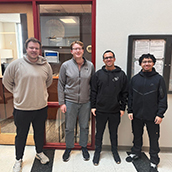
Avoidance of Runway Incursions
Aiden Fales, Kenny Halsell, Daniel Leeper, Christian Soto-Abadia
Runway Incursions are a problem plaguing aviation with increasing frequency. Near misses on the runway are becoming an increasingly common occurrence in both commercial and general aviation. The purpose of this project is to identify the difference in severity category and frequency of runway incursions between commercial(part 135 and part 121) and general aviation(part 91). The research question is how do frequency and severity category of runway incursions compare between part 121 and 135 and part 91 aviation? Using the FAA Runway Safety Office - Runway Incursion Database, we will categorize runway incursion reports by date of the incident, severity category (A, B, C, D, or E), and type of operation (part 135 and 121 or part 91) of the offending aircraft. This data will provide a clearer view into what general aviation can learn from commercial operations to decrease the frequency of runway incursions in general aviation.
Exhibit #2

Contributing Factors to Aviation Training Accidents
Breanna Booth, Quinn Prosser, Sarah Jelliss, Christopher Tobar
Background: We know that certain conditions throughout flight training are more likely
to contribute to aviation accidents. These include when students are flying in the
traffic pattern/terminal area where there are more aircraft in the area. We know that
accidents can occur when practicing engine failures. We know that many accidents occur
during IMC when VFR. Accidents occur on sunny days with clear visibility most likely
because there is more traffic.
Purpose: To evaluate various contributing factors to accident rates throughout flight
training.
Research Question: What are the reasons/contributing factors for flight training accidents?
Methodology:
Data Collection:
Utilize NTSB database
Accidents during training
141 & 61 flight schools
Within the past 20 years
Data Analysis:
Use AI to analyze data
Make graphs and charts using data collected.
Significance: This can help us learn what portions of flight training are most hazardous
and where we need to be more cautious.
Exhibit #3
Differences in Aviation Safety Culture Between the United States and South Korea
Dalton Brand, Chris Brault, Euna Oh, Sewhan Park
This study examines the impact of cultural differences on aviation safety between the United States and South Korea, focusing on how hierarchical culture in South Korea affects cockpit communication, decision-making, and Crew Resource Management (CRM). In South Korea, a more rigid hierarchy can lead to hesitation among junior crew members to challenge superiors, as seen in accidents like Asiana Airlines Flight 214 and Korean Air Flight 801. In contrast, the U.S. promotes assertive communication and standardized CRM training to reduce these barriers. The research will analyze accident reports, safety performance metrics, and regulatory frameworks to compare trends in aviation safety, considering factors like risk tolerance and communication norms. By exploring these cultural influences, the study aims to provide valuable insights into improving global aviation safety practices.
Exhibit #4

Evaluating alcohol consumption on pilots with contrast to safety
Alex Cepon, Lucas Daney, Ethan Fox, Gavin Monthye
The consumption of alcohol among aviation pilots poses serious risks to flight safety, impacting attention span, memory, reaction time, and situational awareness. Despite existing regulations by the FAA and ICAO, alcohol-related incidents remain a concern. This study aims to analyze historical data, incident reports, and case studies to examine the relationship between pilot alcohol use and accident rate. By investigating the relationship between alcohol impairment and cognitive performance, we aim to assess the efficacy of current policies and offer insights into improving pilot health and safety measures, ultimately reducing alcohol-related risks in aviation.
Exhibit #5
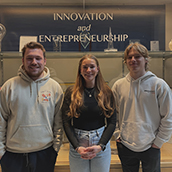
Pilot and Crew Fatigue Management Practices
Aidan Hinz, Eleanor Bailey, Gavin Nieters, Michael Corcoran
Background: In 2014, the Federal Aviation Administration implemented Part 117 regulations to address pilot fatigue. Understanding the effectiveness of these regulations is essential for evaluating their impact on aviation safety and pilot well-being.
Research Question: How has Part 117 influenced pilot fatigue and the occurrence of accidents and incidents in U.S. scheduled (Part 121) operations;
Methodology: This study examines aviation accident databases, including NTSB reports, to compare accident and incident data before and after the enforcement of Part 117. Additionally, existing research and quantitative analysis will aid in assessing the effectiveness of fatigue management practices and regulatory changes.
Significance: Our findings will offer airlines and flight crews valuable insights, guiding future policy changes and fatigue risk management strategies. Understanding the effectiveness of the current Part 117 regulations can assist the aviation industry in identifying potential shortcomings in existing fatigue mitigation practices.
Exhibit #6
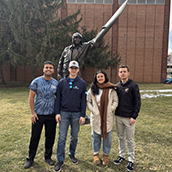
The Influence of Stress and Fatigue on Flight Instructors
Harman Chauhan, Buthiena Medhat, Theo Ortis, Bryce Waldron
A day with eight hours of instruction can prove to be long and demanding, sometimes fifteen hours a day which can lead to high levels of stress and fatigue. We will be examining the stress and fatigue factors affecting Certified Flight Instructors and analyze the potential consequences of these risks on their performance, decision-making, and overall well-being. Our research question will be “how do stress and fatigue impact the decision-making, situational awareness, and instructional effectiveness of flight instructors?” The methodology that we will be utilizing is NAFI, NASA, FAA, NTSB, research universities (ERAU), as well as conducting a 10-question survey to be sent to SLU CFI’s.
Exhibit #7

The Limitations of Aviation Weather Forecasting Models and How They Can be Improved
Lucas Gum, Megan Jarzenbeck, Adam Jehle, Jearrod Johnson
What are the current limitations of aviation weather forecasting models, and how can they be improved for general aviation pilots? Our team will research how the current weather services can be improved to become more intuitive, promoting safer and more frequent briefing practices by general aviation pilots. The biggest limitation of aviation weather is the way it is presented, not the content itself. Improving its presentation to be more comprehensive and easier to self-brief will simplify general aviation operations and enhance safety. To collect valuable data for this research project, our team will conduct surveys at Saint Louis University’s (SLU) Part 141 flight school, as well as at local Part 61 flight schools.
Exhibit #8

Traffic Analysis of Our South Practice Area
David Broadbear, Tom Mohan, Timothy Pipal, Alex Sandoval, Santino Sartoris
This study examines aerial traffic density in the St. Louis south practice area and its correlation to aviation safety risks. High levels of congestion, particularly in airspaces shared by student pilots and general aviation, can increase the likelihood of near mid-air collisions and other safety hazards. Using heatmaps and ADS-B data, we will analyze traffic patterns to identify the most congested areas and peak traffic times. Additionally, pilot surveys will provide insight into commonly used practice locations, allowing us to compare subjective experiences with objective traffic data. By identifying trends in congestion and potential traffic conflicts, this research aims to enhance situational awareness, improve traffic avoidance strategies, and support proactive safety measures. The findings will contribute to a data-driven approach for mitigating risks and ensuring safer operations in our practice area.
Exhibit #9
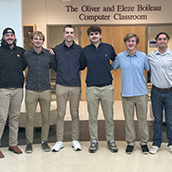
Barduino
6 Guys No Fries: Riley Christian, Kasey Copley, Jacob Darby, Ethan Martin, Dylan Olson, Michael Schneider
A device to measure percentage ratios of liquids for mixed drinks.
Exhibit #89

Burn Buddy
Smokeshows: Hayden Clements, Aidan Dempsey, Caleb Hils, Matthew Pierson, Grant Scherkenbach, Henry Weber
The Burn Buddy is a small modular burn unit that is able to be attached to a grill in order to turn it into a cost effective solution to a two-in-one grill/smoker unit, that has higher quality and lasts longer. This unit is able to adjust to multiple different sources of fuel to cater to the exact need for any smoking project.
Exhibit #90
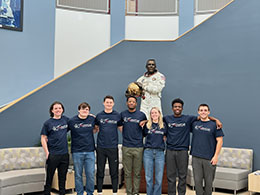
The CARE Drone
Mia Arndt, Zach Conti, Will Jameson, JP Lacroix, Nate Mercier, Chuka Okeke, Ian Roudebush
The Critical Action Rescue Extraction (CARE) Drone is an aerial rescue vehicle designed for emergency response and transportation of either an injured civilian or a first responder. The CARE Drone features autonomous flight, modular design, remote deployment, and a VR interface for remote piloting. It has detachable wings, allowing for easy transport and assembly by three or fewer responders. A tandem wing design enables an electric VTOL propulsion system, with VTOL propellers on the wings' leading edges. These activate for takeoff and landing but are enclosed during horizontal flight by airfoil-shaped sliding doors. A liquid-fuel engine powers forward flight for greater speed and efficiency. The current 35% scaled prototype has a 6 ft fuselage and 7 ft wingspan. While it lacks passenger capability, it includes functional propulsion, detachable wings, and VR control.
Exhibit #88
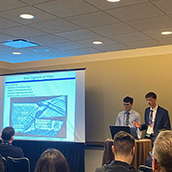
Centerline and Corner Shock Unsteadiness in a Rectangular Channel
Jacob Plonka, Andrew Swartwout
Shock wave – boundary layer interactions occur in a wide range of supersonic flow
applications, and the geometry where they happen can significantly affect the unsteadiness
of the shock structures and boundary layer behavior both upstream and downstream of
the interactions. The current paper analyzes the centerline and corner shock structures
visualized through schlieren imaging for a normal shock wave – boundary layer interaction
at Mach 1.6 in a 4.32 aspect ratio rectangular test section. Results show the corner
shock positions oscillate over longer periods than the centerline shock oscillation,
with approximately three times the centerline shock oscillation period variance. Frequency
analysis of density gradient information obtained through schlieren imaging was found
to yield similar understanding as fast-response surface pressure transducers, allowing
correlation of frequency content between various regions throughout the interaction.
Results also show the shock dampens high-frequency content both upstream and downstream
of the shock similar to boundary layer receptivity behaviors.
Exhibit #71
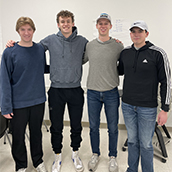
Chair Force One
Secret Chair Service: Drew Bauer, Caleb Dill, Jack Gresham, Ryan Shanahan
Chair Force One is a mechanical engineering senior design project with the goal of making manual wheelchairs easier to operate. The chair will be powered by two push levers independently attached to the wheels. The levers will make it easier for the user to power the chair instead of grabbing and pushing the rims in an awkward motion.
Exhibit #72
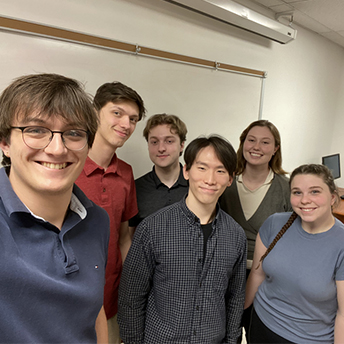
HERON
Charly Glaszcz, Jonghyun Lee, Jacob Plonka, Grady Rhodes, Emily Rollins, Camilo Stever
Project HERON is the design and development of a fixed wing, rolling takeoff UAS for the purposes of aiding existing search and rescue capabilities during natural disasters, including floods, hurricanes, and more. The HERON mission consists of a 4 hr endurance to enable the necessary sweeping grid search pattern for responders. In the event of locating a survivor needing immediate aid, HERON carries a payload with basic first aid and sustaining materials, which can be dropped upon operator command. The HERON drone features a fuselage and folding wing design that allows it to fit into the back of a standard pickup truck bed to allow rapid deployment. It also features short take off capabilities to allow adaptability to the unknown disaster environment.
Exhibit #70
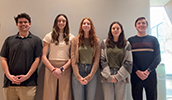
Lawn & Order: Robotic Weeder
Down to Earth Initiative: Elizabeth Dolan, Morgan Pressler, Jessica Rutherford, Bobby Sereno, Clayton Stout
Weeding is one of the most tedious and time-consuming tasks for home gardeners. Unwanted weeds compete with fruits, vegetables, and herbs for nutrients like sunlight and water. This often stunts the growth of these desired crops. Traditional methods, such as hand-pulling or hoeing, require significant effort. As most home gardeners are aged 50 or above, this can be especially hard on the back and knees. Additionally, chemical herbicides, while effective, pose risks to the environment, soil and plant health, and drinking water. As a result, many home gardeners struggle to keep their gardens weed-free without resorting to labor-intensive or potentially harmful methods. Home gardeners would benefit from an automatic weeding device that both removes weeds and prevents them from regrowing. By integrating automation into home gardening, weed control will become easier, more sustainable, and accessible for gardeners of all ages and skill levels.
Exhibit #68
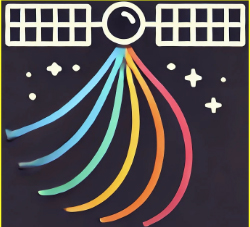
LUMINOS
Conner Cruise, Jeddrick Gamilla, Zachary Messiglia, Chris Moore, Louis Puder
The Lightwave Utilization for Measuring Intra-Atmospheric Nodes and Oscillation Signatures (LUMINOS) mission presents a groundbreaking satellite-based system designed to generate high-resolution vertical atmospheric profiles. This innovative system links a series of satellites emitting laser beams through the atmosphere and the Stellar Occultation Hypertemporal Imaging Payload (SOHIP) device aboard the International Space Station (ISS). LUMINOS provides detailed data on temperature, pressure, density, and atmospheric gravity waves across altitudes ranging from 10 km to 60 km by analyzing the refraction of laser beams as they traverse atmospheric layers. This altitude range is optimized to exclude regions where atmospheric diffusion and vacuum conditions impede measurement accuracy, ensuring high fidelity in data collection.
Exhibit #73
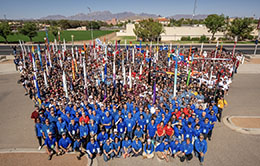
Northstar
SLU RPL: Jack Herlihy, Hao Lai Jin, Benjamin Khotsyphom, James Winkelhoch
Project Northstar is a variable impulse hybrid rocket engine developed for Saint Louis University Rocket Propulsion Lab’s sounding research rockets, designed for seamless integration into standard and legacy SLU RPL airframes while adhering to IREC standards. Classified as an O-4200 engine, it uses PMMA fuel and liquid nitrous oxide, featuring an adjustable oxidizer flow system for real-time thrust control and enhanced safety. The combustion chamber is made from 6061 aluminum with a graphite nozzle and phenolic thermal liner, while the oxidizer is stored in a 700 psi-rated 6061 aluminum pressure vessel. With a total impulse of 5000 lbf·s and an average thrust of 1000 lbf, Northstar provides liquid-like controllability in a modular, reusable hybrid propulsion system. It advances SLU RPL’s propulsion research while demonstrating the viability of hybrid rocket engines in collegiate experimental rocketry.
Exhibit #91
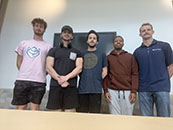
Power Tower
Weightlifting Warlocks: Nico Baca, Josh Dudley, Salah Gharzouzi, Adam Grauerholz, Aidan Martin, Coreoun Stokes
The Power Tower is a dynamic take on the traditional weight rack. It utilizes a winch and pulleys to adjust the height of barbell weight mounts with a cable. The benefit of adjustable height weight mounts is that they allow the user a more comfortable and efficient experience while setting up exercises and changing weights mid-exercise. Another benefit is a decreased risk of strain or injury caused from bending awkwardly while retrieving weights that are too high or low for the user. Our prototype should act as a proof of concept for the mechanism of our product.
Exhibit #92

The MINERVA Mission: Advancing Martian Atmospheric and Surface Characterization for Human Exploration
Team MINERVA: Owen Binkley, Drew Kowalkowski, Keith Lujan, Ben Schneiderheinze, Shelby Slomski, Mia Yeo
The Mars Investigations for Novel Exploration and Regional Value Assessment (MINERVA) mission design integrates an orbital reconnaissance spacecraft and six Mars Automated Weather Stations (MAWS). The mission aims to provide continuous atmospheric and geological data to support future human exploration, addressing gaps left by previous missions. The orbiter will establish a 300 km polar orbit and achieve 90% global coverage with high-resolution imaging, subsurface radar, and atmospheric profiling. It will also serve as the primary communication relay for landers. The MAWS network, deployed at six potential landing sites, will collect real-time meteorological data for at least three Earth years powered by radioisotope thermoelectric generators (RTGs) to ensure continuous operation. The mission itself employs proven flight hardware, precision entry, decent, and landing systems, and robust communications links. By combining these elements, MINERVA will generate critical datasets for human spaceflight planning, incorporating NASA’s Mars exploration objectives to facilitate future manned and unmanned missions.
Exhibit #74

Augmented Exercise Accelerometer
Andrea Grisalez, Chris Lau, Stephen Le, Adam Zabel
The Augmented Exercise Accelerometer aims to accurately distinguish between types of exercise. The device operates using electromyography (EMG) and an accelerometer external to the user's body. It features a centralized accelerometer and two EMG sensors attached to one of the user’s arms and one of the user’s legs; all three sensors are connected to a central processing unit. Collectively, this apparatus monitors muscle activation and analyzes the patient’s movement patterns. The data retrieved is communicated to a laptop where it can be analyzed to accurately determine what kind of exercise is being performed. One such application for this device would be in the case of pacemaker and ICD patients to more accurately determine their movements and provide improved heart rate modulation.
Exhibit #75

Adding a Rotating Wrist Joint to a Robotic Hand for Expanding Functional Mobility of Lower-Arm Prosthetics
Elizabeth Flad
Prosthetic limbs have been developed and used for patients as a way for them to gain mobility back from a lost appendage. This capstone project focuses on improving the range of motion of lower-arm prosthetics: allowing for rotation at the wrist through pre-programmed user controls. This added ability would allow users to perform more complex tasks that may be overlooked in more traditional designs. To accomplish this, a stepper motor is mechanically and electrically integrated with robotic hand, acting as a wrist joint. User controls are defined through firmware and software components. Pre-programmed code allows for a user to choose a command to make the robotic hand rotate to a desired extent. Considerations include the increments of rotation abilities, integration between wrist-rotation and finger-movement programs, and how the wrist will attach with the hand.
Exhibit #82
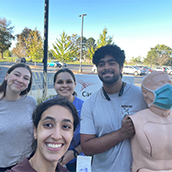
Cardinal Health NG Tube Test Environment
Harshith Kumar Gorla, Alexis Lehmann, Katherine Marino, Andrea Sedano, Aryana Yazdi
This project aims to create an anatomically and physiologically accurate respiratory and digestive system to test Cardinal Health's new novel product concept. This new product by Cardinal Health is a nasogastric feeding tube that contains a sensor that can differentiate between the placement of the feeding tube in the stomach or lungs. The product will be able to detect placement in the stomach by producing signals when it encounters acidic fluid and detect placement in the lungs by sensing the temperature change between inhaled and exhaled air. This group is developing a lab test system that can be used to evaluate the sensors within Cardinal Health's product. The system will include an anatomically correct respiratory and digestive tract and simulate the conditions our product senses in the stomach and lungs. Within the system's stomach, it shall mimic the environment including the acidic environment, stomach lining, and fluctuations of fluid levels. This system will provide an adjustable variable respiration rate for the lungs, heating lungs to body temperature, and effectively transferring the heat-moving air.
Exhibit #83
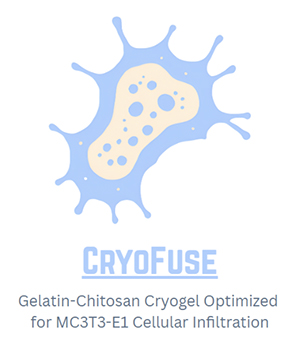
Gelatin-Chitosan Cryogels Optimized for Cell Seeding/Infiltration/Growth
Cryofuse: Clara Kokenge, Tanishaa Manna, Kristina Pinkham
Cell mechanics and mechanobiology are the study of how external forces influence the life cycle and/or biochemistry of a tissue or culture of cells. In the Bledsoe lab, we are interested in the study of bone cells to better understand how we might create tissue engineered bone for bone graft applications. One of the immediate challenges for this kind of study is getting the cells into the scaffold environment, in this case gelatin chitosan cryogels. This project would seek to define the process for seeding MC3T3-E1 cells into the cryogels, including how to make the cryogels such that the cells can infiltrate, attach, and grow.
Exhibit #76

Ground Inclination Tool
Michael Buescher, Julia Rooijakkers, Sean Schwetschenau, Libby Steilen
Ground Inclination has significant impacts on movement biomechanics and metabolic processes. This makes it very important to know the terrain that someone travels along daily, and has implications for sports performance, injury prevention, and rehabilitation. Current technology lacks the specificity and accuracy to track terrain and elevation changes experienced in every day life. Our project seeks to make a tool that allows for precise tracking that will not drift over time and will be capable of tracking ground incline throughout a person's day.
Exhibit #77

Investigating Neuromuscular Crosstalk with a Tissue Culture Device
Amelia Ridolfo
This work used an in vitro tissue culture device to investigate the crosstalk between muscle and nerve cells and simulate the process of neuromuscular junction (NMJ) formation. The in vitro tissue culture device was seeded with myoblasts (C2C12s) in the left and neurons (NSC-34s) in the right chamber, which were separated by a series of microfluidic channels. In the control group without supplements, neurons proliferated more while myoblasts expressed acetylcholine receptors without agrin, suggesting diffusion of motor neuron-derived agrin across the microchannels to prime the myoblasts for NMJ formation. In the experimental group with growth factor and agrin supplementation, motor neuron density was lower, while myoblasts showed robust acetylcholine receptor clustering. Desmin+ cells appeared in the neuron chamber, indicating myoblast migration through the microchannels due to the chemotactic influence of neurotrophic factors. These findings have implications for regenerative strategies targeting neuromuscular repair following acute and chronic denervation of muscle tissue.
Exhibit #78
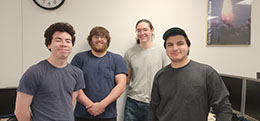
Network Sniffer
Dylan Barrett, Joe Kohlberg, Nikolas Poholik, Robert Sloyan
This project aims to develop a small, easy-to-use network sniffer that plugs into
an Ethernet cable and sends the captured data to a computer through a USB connection.
Unlike complex and expensive network monitoring tools, this sniffer is designed to
be a simple plug-and-play solution. By capturing and decoding network traffic, it
can help users monitor network health, troubleshoot issues, and even detect potential
security risks.
The device will come with software that displays the captured data in an understandable
format, making it easier to analyze what's happening on the network. The sniffer will
work across various network protocols, making it adaptable for different scenarios.
Exhibit #84
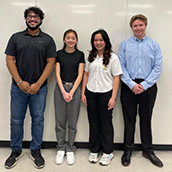
Patterned Hydrogels to Study Cancer Cells
Annalise Le, Michael Pritchard, Van Phan, Raghav Yalamanchili
Liver cancer is a life-threatening illness and one of the fastest-growing cancer types in the United States. Recent work has shown a correlation between cancer cell accumulation in the liver microvasculature and poor patient prognosis. While liver tissue is abundant in collagen, the perivascular niche is abundant in hyaluronic acid (HA), suggesting a prominent role for HA in cancer malignancy. This project aims to develop hydrogels with patterns of collagen (specifically methacrylated gelatin; GelMA) and HA (specifically methacrylated HA; HAMA) to study cell preference and migration in the presence of HA. Both HAMA and GelMA are photo-crosslinkable, which could be exploited for patterning in both 2 dimensions and 3 dimensions.
Exhibit #79

Prosthetic Hand with Touch Sensors
The Helping Hands: Ashley Chung, Kiley Hurford, Srishti Mitra, Joseph Murphy
The prosthetic arm will be able to use some motors to be able to move the fingers of the arm, the design of the hand will start with 3 fingers to start with to be able to create a functioning hand to be able to pick up, hold and move an object (an egg). Since we are using motors to move the finger we will need to use some string or material that is able to move the finger and hold the position it is being held at while being able to withstand the amount of force the finger needs to move and the motor being able to move the finger using the string.
Exhibit #80

SafePace
Shane Grippi, Jason Nguyen, Keegan Pham, Foster Young
Alert users of personnel within their vicinity using a device attached to a running vest. If they are attacked, the vest will alert people nearby and authorities while also recording video.
Exhibit #85

Smart Water Bottle
Onaedo Adigwe, Tyler Ridgway, John Sullivan, Joe Williams
The Smart Water Bottle aims to meet the needs of health professionals, healthcare consumers, athletes, students, professionals, and individuals seeking to improve their hydration habits. This product positions itself at the intersection of health, technology, and sustainability, responding to the growing demand for smart wellness solutions in today’s market.
Exhibit #81
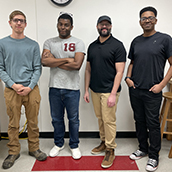
Tactile Avenue
Terrell Earl, Ben Elser, Praneeth Jasti, and Omari Wooldridge
This project is meant for amputees who are in poverty and don't have the necessary benefits and/or coverage to obtain the average market robotic hand. This project is to present them with the option they otherwise would never have. We want to demonstrate that they can get the hand that isn't an inferior replacement but an reflection on what they can achieve in the future that is an equal replacement. We want too hear the feedback from our product and make sure it is to their liking. This journey is to showcase that they is an positive outlook for an robotic hand that meets the needs and wants of an amputee without financial risk.
Exhibit #86
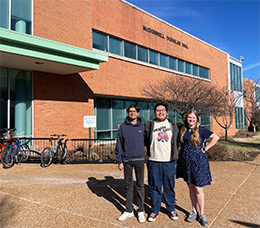
The Smart Pillbox
Dose of Genius: Severo Enriquez, Evan Hernandez, and Christine Honigfort
Using our smart pillbox, patients and their families will have one less thing to worry about as our device allows for reliable and consistent dosage reminders and distribution. Our circular pillbox rotates to reveal the user's medication at the appointed times chosen from the built-in touch screen and uses an infrared sensor to know when a pill has been retrieved. Until the user takes their medication, LED's will flash and an alarm will sound. With the many negative health complications that can occur from failure to take prescribed medication regularly, our device will help keep users healthy.
Exhibit #87

Alkyl Trichloroacetimidates as Milder and Safer Activators for Thioglycosides
Nicholas Forsythe, Glen Gochenour
Alkylating reagents such as methyl triflate and methyl iodide are effective activators of thioglycosides in glycosylation reactions. However, these reagents pose serious health concerns, driving interest in developing safer protocols for alkylation-based glycosylation. Previously, Forsythe et al reported that benzyl trichloroacetimidate (TCAI) is capable of activating thioglycosides, but the reaction rates and product yields could be low. With a goal of expanding the utility of this new method, reported herein is a dedicated study of a series of different TCAI as activators for thioglycosides under mild reaction conditions. We have identified 4-methoxybenzyl TCAI and diphenylmethyl TCAI as superior reagents leading to the highest yields in a variety of glycosylation reactions. Our results suggest that stability of the carbocation intermediate has direct correlation with glycosylation yields. Additionally, we determined that sterically hindered and acid-labile reagents could have detrimental effects on glycosylation yields. Overall, the extended experimental and mechanistic study led to a well-rounded methodology for the activation of thioglycosides using safer alkylating reagents under milder reaction conditions.
Exhibit #10
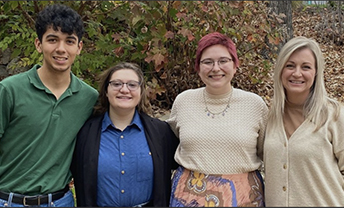
Alkyne Coordination and Reactivity with (β-Dialdiminato) Iron Complexes
Lillian Adams, Reymundo DeLeon, and Jamie Neely
A 2,6-diisopropylphenyl-substituted β-dialdiminate ligand was prepared and complexed to the first-row transition metal iron and studied in the presence of varying alkyne substrates to test for possible coordination. Previous work has been done to show that the use of phenylacetylene can successfully displace toluene in the iron complex and the starting material.1 This new complex can then go on to participate in bimetallic coupling, where this phenylacetylene complex can be used as a catalyst for alkyne trimerization. New alkynes were explored to test whether bimetallic coupling was possible with less reactive alkynes with alkyl groups (e.g. 1-octyne) or with an internal alkyne (e.g. phenylpropyne). These studies may lead to other bimetallacycle products for the preparation of other stable, iron catalysts.
Exhibit #11

Altering ribosomal stoichiometry by targeting eIF6 decreases cancer cell viability
Megan Li
Ribosomes are the molecular machines that synthesize proteins in the cell. Increased ribosomal levels leading to increased rates of protein synthesis are critical for cancer progression. An important factor for modulating ribosomal availability is eIF6 that is overexpressed in many highly invasive cancers. Therefore, it has been proposed that targeting eIF6 interactions with the ribosomal subunit is a good therapeutic strategy for cancers. However, it remains unclear as to how targeting eIF6 and ribosomal interactions affects protein synthesis and cancer growth. In this study, we show that targeting eIF6 decreases protein synthesis rates but does not affect the activity of key translation initiation factors. Instead, it affects the stoichiometry of active ribosomes and potentially inhibits ribosome recycling to stall cancer growth. Thus, these studies highlight the mechanism and significance of targeting the eIF6 and 60S interaction interface for cancers.
Exhibit #12
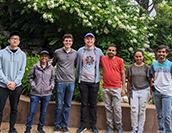
Bimetallic Co-Facial Porphyrin Catalysts for Polymer Degradation
Malkanthi Karunananda, Madhusha Manna Peruma, Jackson Smith
Plastics pollution is one of the biggest environmental crises that impacts our planet today. Inspired by the C-C bond breaking abilities of lignin peroxidase and cytochrome P-450, we have designed and synthesized bi-metallic, bi-ligand systems to cooperatively hydroxylate and weaken adjacent carbon atoms in polymer backbones simultaneously to promote facile degradation. The hydroxylation of hydrocarbon substrates by Ru-catalysts with varying electron-withdrawing groups were studied computationally by DFT. The hydrogen atom abstraction and oxygen rebound transition states were traced to calculate the activation barrier against ethylbenzene. Our research aims to extend these catalytic strategies to the degradation of various synthetic polymers, addressing the urgent need for effective solutions to plastic waste. By optimizing the electronic and steric features of the bimetallic catalysts, we seek to enhance selectivity and yield in the degradation process, ultimately contributing to the development of sustainable methods for mitigating plastic pollution.
Exhibit #13

Characterization of 5-methylcytidine in previously solved RNA structures
Ashwin Biju Pillai, Sebastian J. Arteaga, and Brent M. Znosko
Nucleotide modifications in ribonucleic acid (RNA) have become a point of interest for understanding the structure and function of the various forms of RNA that exist in nature. Studying such modifications will aid in understanding many cellular processes involving RNA. 5-methylcytidine (m5C) is the modified nucleotide of interest for this particular study due to the immense biological relevance of this specific modification in different forms of RNA. This work details the identification, characterization, and annotation of m5C in previously solved RNA 3D structures found in the Research Collaboratory for Structural Informatics Protein Data Bank (RCSB PDB). Utilizing a series of Python based scripts, sequences containing m5C in their respective secondary structure elements were isolated from the 3D structures. Information was gathered regarding conformation and interactions of m5C. Comparison of the interactions involving m5C to canonical cytosine will highlight the benefits of using this modification in various applications.
Exhibit #14
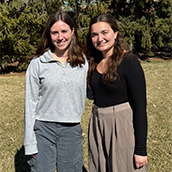
Determination of stress levels using psychological and physiological methodologies
Alagic, Asmira Alagic, Grace Fogarty, Damon Osbourn, Liz Pfau
The goal of this study was to determine a method of assessing both the psychological and physiological stress levels in subjects in an effort to track effective methods of lowering cortisol levels and improving mindsets. To examine psychological stress levels, surveys and an intervention were conducted in General Chemistry 2 courses at Saint Louis University from 2022 to 2023 using the GAD-7 scale, indicating high levels of anxiety. The intervention, given between the two surveys, addressed the definitions and ways to mitigate harmful mindsets. To examine physiological stress responses, methodology surrounding extraction and quantification of hair cortisol was developed, with results on the treatment of hair and its effect on cortisol levels found to be insignificant. A combination of these methods could be utilized to determine precise changes in stress response and provide valuable information on how to best address stress to minimize its impacts on the mind and body.
Exhibit #15
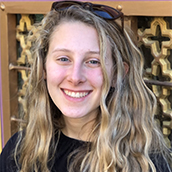
Exploring the Generality of Electrochemically Initiated Decarboxylative Radical Formation and Its Applications to C-F Bond Formation
Kathryn Piette
Generation of reactive carbon-centered radical species and controlling these radicals provide potential for powerful bond-forming reactions. Radical decarboxylation using readily available carboxylic acid substrates and electrochemical techniques is potentially a highly versatile and sustainable method of generating these radicals. The focus of this research is to study the intricacies of generating and controlling radicals via direct electrochemical electron transfer from carboxylates and their subsequent decarboxylation applying this knowledge to radical C-F bond formation. A major troubleshooting point and key to the success of these reactions has been found in controlling the rate of a second oxidation of the radical to an undesired cation relative to radical trapping with fluorinating reagents.
Exhibit #16
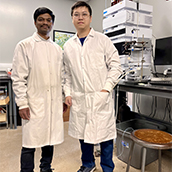
Gold-catalyzed glycosylation as a new paradigm for the HPLC-Based Automated platform
Yogesh Vishnu Sutar, Minh Tran
Chemical synthesis is a great way of obtaining pure samples of complex biomolecules such as carbohydrates or glycans. However, this approach could be cumbersome because it requires specialized training in synthetic methods and purification techniques that mark carbohydrate chemistry both interesting and laborious. Solid-phase synthesis (SPS) of glycans on polymer supports simplifies overall process by eliminating the need for purification at each step. Also, it is automation amenable, which was first demonstrated by Seeberger in 2001 who developed a specialized equipment for this purpose called Glyconeer, which was commercialized in 2014. In 2012, the Demchenko group reported a new platform for automation of the SPS, which is based on inexpensive and abundant laboratory equipment called HPLC. This platform has subsequently been improved, and can now be used in a fully automated, “press-of-a-button” fashion. Presented herein is a new gold-catalyzed glycosylation reaction, which has been developed to be implemented into the HPLC-based synthetic platform. After performing the detailed mechanistic study using spectroscopic analysis, we showcase how this new reaction can streamline the synthesis of linear glycans containing arabinofuranoside and galactopyranoside residues.
Exhibit #17
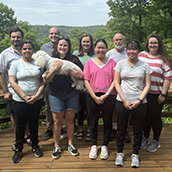
Measuring Binding Interactions of HBV epsilon RNA with Truncated Version of HBV Polymerase
Anna Pan, Razia Tajwar, and John E. Tavis
Hepatitis B virus (HBV) is a hepatotropic partially double-stranded DNA virus that replicates by reverse transcription, chronically infecting >250 million people causing over 1,100,000 deaths annually. The HBV polymerase is a promising therapeutic target but lacks a crystal structure due to its instability in most protein production systems. Utilizing fluorescence polarization (FP), we are developing a substrate binding assay for Hpol7, a stable truncated human HBV polymerase variant containing terminal protein (TP), linker, and parts of reverse transcriptase (RT) domains. In this study I optimize the binding assay of Hpol7 with epsilon (ε), the 5` terminal region of HBV pregenomic RNA that is the specific binding site for the polymerase on the viral RNA genome, by testing different incubation temperatures and different concentrations of NP-40. Substrate specificity were determined by using HBV and duck HBV (DHBV) ε alongside with measuring binding affinity of ε through substrate competition assays. Optimization of FP binding assay of HPol7 with ε will allow us to screen inhibitors against initial reaction of HBV reverse transcription and to mechanistically dissect the binding reaction.
Exhibit #18
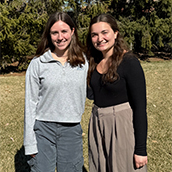
Methodology behind the Determination of Reliable Hair Cortisol Analysis for Psychological Research
Grace Fogarty, Damon Osbourn, PhD, Liz Pfau
Analyzing cortisol levels as a form of physiological data in psychological research is common due to the role it plays in the stress response. It is also known that chronic exposure to stress is associated with many negative health effects due to mediations in the hypothalamus-pituitary-adrenal (HPA) axis. Saliva cortisol analysis is relatively simple but only reflects acute changes in stress. Conversely, hair cortisol analysis is more representative of one’s basal cortisol secretion and examines exposure to chronic stress. However, quantification of cortisol extracting from a sample of hair is complex, with a range of factors affecting the degradation of the sample, making it difficult to analyze long term patterns. Accurately quantifying cortisol extracted from hair samples is needed to explore the hypothesized negative effects. This study explores the various techniques that have been used to create an optimal method of hair cortisol analysis.
Exhibit #19

Parent-specific allele expression bias in Ciona
Liam Rodman
FoxF and homologs are critical for mesoderm morphogenesis in ascidians. Acting as an effector in the FGF developmental cascade, FoxF both responds to FGF signaling and regulates downstream FGF pathways. However, parent-specific allele expression differences of FoxF are poorly understood. Here, we use in situ hybridized chain reaction (HCR) to quantify parent-specific allele expression bias in heart progenitor cells in two species of the tunicate, Ciona, as well as an interspecies cross for comparison. A one-way ANOVA test revealed that hybrid paternal – and not maternal – allele expression was significantly lower than mean non-hybrid allele expression. These results suggest a bias against paternal allele expression of FoxF in Ciona, indicating a potential species-specific regulatory divergence.
Exhibit #20
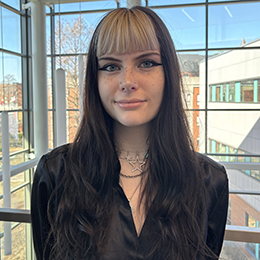
PROTACs for Breast Cancer: HATU Amide Coupling for Bifunctional TLR4 Degraders
Lavelle Barnes
Breast cancer is the most common type of malignant cancer in female patients. 90% of breast cancer fatalities are caused by metastasis in the lungs, liver, bones, and brain. Proteolysis-targeting chimeras (PROTACs) are novel therapeutic agents containing heterobifunctional moieties connected by a linker. An E3 ligase ligand is connected to a “warhead” targeting the protein of interest. These molecules are used to target a variety of diseases, including cancers, immune disorders, and viral infections. The selectivity of PROTACs allows for specific targeting of one protein, reducing side effects that are typical with traditional cancer treatments such as chemotherapy. In this work, an AHPC E3 ligase linker was connected to a TLR4 inhibitor to target breast cancer. This was accomplished through a one-pot HATU amide coupling reaction. The PROTAC LB-02-021 was used in in-vitro studies to determine the efficacy of the drug. Cytotoxicity assays have shown evidence of efficacy of LB-02-021 at 10 µM.
Exhibit #21
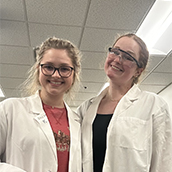
RNA Hairpins of Seven
Peyton Cattoor, Emma Duman, Brent Znosko (PI)
Predicting RNA secondary structure from sequence is a crucial intermediate step in determining its 3D structure. Secondary structure prediction relies on a nearest neighbor model that utilizes free energy minimization. To enhance the accuracy of these predictions, it is essential to thermodynamically characterize all types of naturally occurring secondary structure motifs. However, certain motifs remain under-characterized, including heptaloops—hairpin loops consisting of seven nucleotides. Hairpins form when an RNA strand folds back on itself, creating Watson-Crick pairs, with unpaired nucleotides at the loop’s end. These structures play vital roles in RNA folding, mRNA stability, and regulation of biochemical processes such as translation, initiation, and termination. The current thermodynamic model for predicting heptaloop stability is based on a limited dataset of heptaloops and data from other hairpin types. In this study, we identify the most frequently occurring heptaloops and perform optical melting experiments to gather new data. Using linear regression, we will develop a heptaloop-specific thermodynamic model. This new experimental data and refined model can be integrated into RNA secondary structure prediction software, improving the accuracy of sequence-based predictions.
Exhibit #22
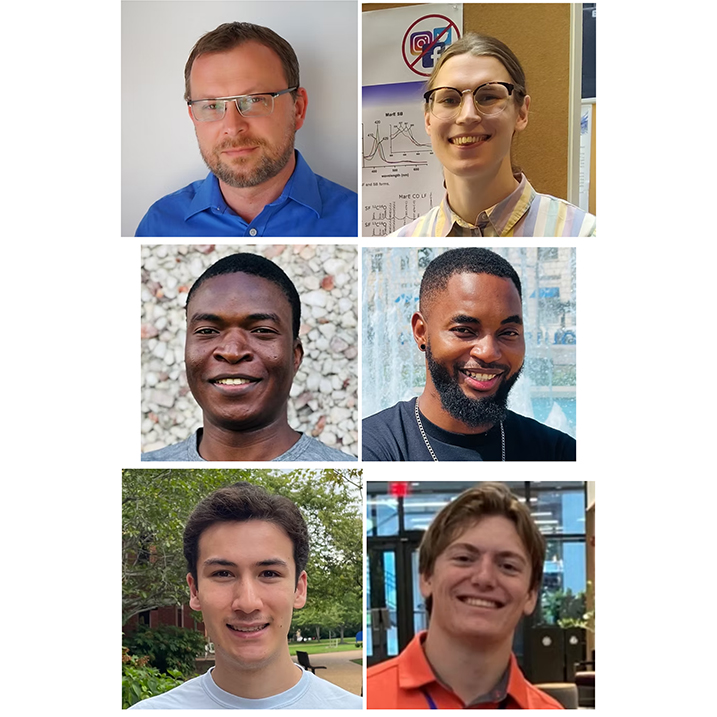
Spectroscopic characterization of noncanonical heme-degrading proteins from Staphylococcus aureus and Mycobacterium tuberculosis
Joseph Hupp, Dr. Piotr Mak, Richard Matarise
The enzymes IsdG and IsdI from Staphylococcus aureus and Mhud from Mycobacterium tuberculosis are responsible for heme degradation, an important reaction in which the pathogen obtains free iron from a host, a crucial nutrient for its vitality. The proteins were expressed in E. coli and purified using affinity chromatography. The IsdG and IsdI proteins were reconstituted with heme to obtain heme-IsdG and heme-IsdI complexes. The complexes were studied by electronic absorption spectroscopy in their ferric and ferrous oxidation states, as well as ferrous CO adducts. It was shown that, upon reduction, the heme-IsdG and heme-IsdI exhibited distinct red shift changes in their absorption spectra, indicating the conversion from the ferric to the ferrous form. An addition of CO gas to the ferrous samples resulted in a blue shift of the Soret band. These shifts reflect alterations in heme electronic structure, such as oxidation and spin states, as well as its coordination geometry. The MhuD-R26S mutant was reconstituted with heme using the CN-CO replacement method. Absorption spectra show separation and generation of the pure mono- and diheme forms. These samples will be then used for resonance Raman measurements to gain insight into their vibrational structure.
Exhibit #23

Synthesis and Structure-Activity Relationship Development from Amide Analogues for the Treatment of Cryptosporidiosis
Alisa Mara
Cryptosporidiosis is an illness brought on by the parasite Cryptosporidium. Children and immunocompromised individuals are more gravely impacted than others for contracting the illness, with death as a possible result. Those infected regularly present with symptoms of diarrhea, malnutrition, and dehydration. Unfortunately, nitazoxanide is the only FDA-approved drug and is not effective to those most vulnerable, often having a low efficacy in these individuals. Previous structure-activity relationship (SAR) studies discovered phosphatidylinositol-4-kinase (PI4K) as the target of a naphthyridine lead series. Further optimization identified that a pyridopyrimidine core and an 8-position morpholine group yield greater potency. This work in particular involves the synthesis of three analogues for potency evaluation against Cryptosporidium, focusing on the installation of amides to further develop SAR.
Exhibit #24

The Synthesis and Photochemistry of Benzonaptho Thiophene Sulfoximine
Riley Tharp
My project was synthesizing 11-(phenylimino)-11H-11|4-benzo[b]naphtho[2,1-d]thiophene 11-oxide(BNTNPhO) and investigating its photoochemistry.
Exhibit #25
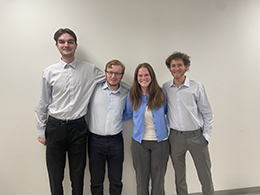
ARDOT HWY 120 Box Culvert Design
CLAM Design Inc.: Lucas Gratton, Matthew Onischuk, Abigail Pahls, Colin Somers
Civil Engineering senior design incorporating a rehibilitated roadway section and box culvert design, for a stream replacement in North East Arkansas.
Exhibit #96

Deerwood Drive & US-61 Intersection Redesign
Vertex Transit Solutions: Embry, Ramirez, Salameh
The capstone project focuses on the intersection of Deerwood Drive and US-61 in Jackson, Missouri. It is a side-street stop-controlled intersection that is currently experiencing delays due to increased development. The area provides access to several homes and businesses and doesn’t serve the current level of traffic, causing congestion. After evaluating several alternatives, the chosen design calls for the implementation of a traffic signal and updated pavement markings and signage. The final design better serves all users, providing safer traffic conditions for drivers and safer crossings for pedestrians.
Exhibit #97

Reimagining Urban Spaces: Adaptive Sustainability and Community Integration in Maryland Heights, Missouri
Black Brick Design Group: Lucas Boldenow, Benjamin Hagadorn, Kenan Johnson, Luke Powell
Black Brick Design Group is excited to introduce their newest four-story, mixed-use building concept, offering a 15,000-square-foot footprint. The first floor provides premium retail frontage, while the upper levels house 18 modern, market-rate apartments. Carefully blending contemporary architecture with the surrounding neighborhood’s style, the design also highlights energy-efficient features and environmentally conscious construction. Large windows, rooftop solar integration, and strategic insulation minimize the building’s carbon footprint without sacrificing comfort. This vibrant project positions sustainability and community engagement at the heart of its design, ensuring lasting value for both residents and local businesses.
Exhibit #95

Water Distribution System
AGUA VIVA: Alisha Castaner, Brayden Maule, Michael Muenzberg, Ehab Touqier
This project focuses on the design and optimization of a sustainable water distribution system for the small indigenous community of Xechiroj Pass II in Guatemala. With a current population of 3,000 and a projected increase to 4,013 in the next 20 years, the system must ensure adequate water supply, quality, and reliability. The estimated daily water demand is 30,000 gallons.
Exhibit #98

AI-powered chatbot for STR
Sergio Cavestany (SLU Madrid)
This chatbot is an innovative automated communication solution integrated with a property management system (PMS) specialized in managing properties for platforms such as Airbnb and Booking.com. Built using modern technologies like NestJS and a microservices architecture, the Chatbot efficiently handles guest inquiries and issues, ensuring timely and effective communication. It is seamlessly integrated with Logify, which manages bookings and leverages an API to send intelligent, automated responses. Additionally, the system incorporates a polling service that periodically monitors new messages and triggers responsive actions based on incoming content. This integration enhances the overall user experience by reducing response times and improving customer satisfaction for both guests and hosts. The project represents a significant advancement in automated customer service within the hospitality sector, streamlining operations and offering a competitive edge in an increasingly dynamic market. By leveraging automation and intelligent messaging strategies, the solution redefines efficiency and reliability in property management.
Exhibit #26
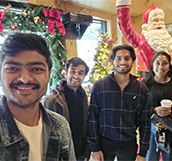
Better Bioinformatics
Oam Khatavkar, Pranavi Kolouju, Om Patel
This project aims to develop a tool leveraging large language models (LLMs) to recommend bioinformatics APIs and detect API usage errors in research code. The tool will specifically address the challenges of proper API usage in bioinformatics, where incorrect data handling can lead to faulty conclusions and, in severe cases, affect patient outcomes. This application provides API recommendations, detects potential errors, and suggests corrective actions in real-time. The LLM will be trained on bioinformatics codebases, ensuring the tool can understand and guide correct API usage. The end goal is to improve research reliability, accelerate discoveries, and enhance data-driven health solutions.
Exhibit #27

BumpBeats
Souha Feriani, Sebastian Lugo Gines, Patrick Webb (SLU Madrid)
The project consists on creating a smart wearable patch that would detect the vital signs of the pregnant woman and her fetus starting from week 10. The data will be wirelessly transmitted from the device to the app. In case of any irregularities, the app will alert the pregnant woman and urge to make an appointment with the healthcare provider.
Exhibit #28

Database of Arithmetical Dynamic Systems (DADS)
Bradley Sheldon, Omair Syed, John Doan, Ngan Nguyen
The goal of this project is to create a comprehensive database of arithmetic dynamical systems and a flexible, web-based, search-driven user interface. The web-based interface to access the data will be search-driven making tasks such as locating examples with specific properties or examining the collective statistics of certain sets of dynamical systems as simple as possible. This data will be able to be exported for further analysis. This type of searchable rich data set will save researchers countless hours of computation as well as provide a means to identify previously unknown patterns and connections.
Exhibit #29
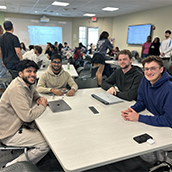
Digital Bones Box
Josh Budzynski (student), Burhan Khan (student), Luke Tomlinson (student), Sri Tammiraja
Karthikeya Sai Santosh Iragavarapu (tech lead)
DigitalBoneBox is a web-based study tool that transforms PowerPoint-based anatomy resources into an interactive application for quick revision. This semester, the project aims to achieve three key objectives. First, it will enable PowerPoint content to be presented in a ‘view only’ web format by extracting data into JSON and displaying it in-browser. Second, the UI will be made responsive, ensuring a simple, clear, and functional layout across devices. Lastly, an editor view will be developed, allowing authorized users to easily add or modify content, enabling seamless content updates. Progress will be measured through functional implementation and usability improvements.
Exhibit #30
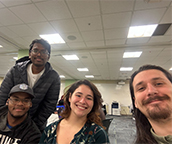
Drone World
Drone World Team: Darweshi Amerson, Valerie Galiano, Noah Guzinski
A Unreal Engine Drone Simulator, allowing for flight tests in various conditions weather, and locations. Users are able to pick real world locations and and be able to test the success rate of a flight path given battery life, wind, and starting location. This allows one to mitigate the risk of losing a drone given a certain environment.
Exhibit #31

ESP
Haneen AlSewari, Paul Ongkiko
Imagine you have a big pile of homework and, instead of going through each sheet to
find what you need, you could use an app to quickly gather everything into one organized
document. That’s what our project does, but for professors and researchers studying
chemistry. They work with complex files and need to find specific information, and
our tool helps them do that quickly without having to search manually. For chemistry
professionals, this is a game-changer. Right now, professors like our client must
search through a lot of files by hand and pick out important data, which takes time
and can lead to errors.
Our solution is an easy-to-use tool where users upload their files, search for what
they need, and receive a document with the relevant information. This saves time and
reduces mistakes, allowing them to focus more on research.
Exhibit #32
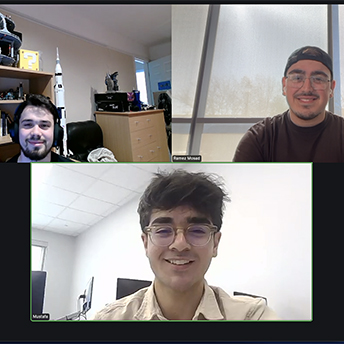
Image Recognition Integration System (IRIS)
Mustafa Hashmi, Ramez Mosad, Megh Patel
The Image Recognition Integration System (IRIS) was created to simplify the development of domain-specific image search applications by providing a structured and modular framework.
The need for such a system arose from challenges faced in various fields, such as healthcare, education, and research, where efficient image retrieval and AI-powered search functionalities are crucial. Current solutions often require deep expertise in machine learning and infrastructure setup, making it difficult for many developers to integrate image recognition and search functionalities into their applications.
To address these challenges, IRIS was designed as an easy-to-use, scalable framework that allows developers to integrate pre-trained machine learning models and efficiently search through image datasets. Whether a developer wants to build a healthcare diagnostic tool, an educational image repository, or a research-oriented image retrieval system, IRIS provides the necessary components to streamline development.
Exhibit #33

Material Donor Mutual Assist
Atiqullah Asghari, Sai Teja Dugyala, Joseph Hansen, Samuel Kann, Lalith Adithya Reddy Avuthu
The Material Donor Mutual Assist project, managed by BWorks Organization, aims to
enhance donor engagement and program transparency through detailed tracking and
management of donated bicycles and computers. This application is for maintaining
the donor details, to track the donations and to send the donors timely emails. This
encourages engagement with donors and connect them with the items that they've donated.
This project will not only showcase the lifecycle of each donation but also drive
potential conversions of material donors to financial contributors by enhancing their
connection to the cause.
Exhibit #34

MeltShiny
Abhilash Kurapati, Samuel Mercier, Swetha Repalli, Andrew Vazzano
There are over 6000 genetic disorders that plague us today yet only around 600 of them are treatable. Our goal is to aid scientists of all skill levels in their pursuit of cures and treatment plans by designing an application to streamline their research. Our project, MeltShiny, is a groundbreaking tool that automates DNA melting curve analysis for researchers in chemistry, biology, and genetics. It gives a user interface to the MeltR and MeltWin libraries, simplifying data visualization and curve fitting, transforming complex tasks into a seamless experience. MeltShiny streamlines research workflows, making DNA thermodynamics accessible to scientists of all skill levels, driving efficiency and innovation in the lab.
Exhibit #35

Mouser
Jack Belyeu, Eric Bruns, Ibro Kardasevic, Noah Mosher, Nicholas Newbauer
Created mainly for SLU researchers, this software is used for collecting and analyzing data from animal experiments. While in the lab, scientists are often required to keep their environments very clean, which means that they must limit how much they touch the computers and lab equipment. To facilitate this, Mouser allows laboratory equipment (balances, calipers, RFID chip readers) to be connected to a PC, and researchers can quickly take repeated measurements with as little interaction as possible. Running as a desktop app, users of the software can create and manage experiments in one easy place. Animals implanted with RFID biochips can be scanned into the system for easy identification and data access. Once a session is started, the user is able to take measurements of the animals using devices connected to the computer without having to use the keyboard or the mouse. The program gives confirmation to the user through sounds and changes in display, allowing them to focus on the experiment.
Exhibit #36
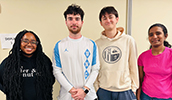
Open-project
Joi Laws, Thomas Macas, Lakshmi Prasanna Mamillapalli (Tech Lead), Colin Seper
The SLU Open Project is an open-source user-friendly platform designed to simplify the submission and tracking of manufacturing jobs. It is specifically designed for the Saint Louis University Center for Additive Manufacturing, but can be adapted for other organizations. It's also helps with processing, and toolshops within an organization. It allows users to easily update job specifications and schedule meetings on demand, enabling departments or labs to submit jobs together and manage separate billing. Overall, it enables the submission and tracking of manufacturing jobs to be easier with SLUCAM and for companies.
Exhibit #37
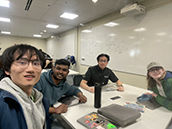
Pi4Micronaut
Ava Enke, Seyun Jeong, Ralph Tan, MyrlManohar Reddy
Pi4Micronaut is a Java library designed to make it easier for developers to build applications that interact with Raspberry Pi. The Raspberry Pi is a small computer designed for education, robotics, home automation, hobbyists, and more. It can connect components like LEDs, motors, sensors, displays, etc. The Pi4J library allows Java programming for Raspberry Pis. Pi4Micronaut provides a unique opportunity through the Micronaut framework for microservice applications, enabling small, independent components to operate faster by doing more at compile time. This is specifically for Java developers who want to create home mobile applications, such as LED monitors, buttons, etc.
Exhibit #38
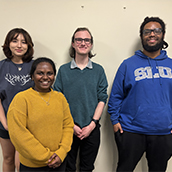
Pilot Data Synchronization
Ali Elnour, Carly Hoover, Henry Meiners
Pilot Data Sync aims to aggregate simulation data from XPlane, a flight simulator. Our application plugin will take hand data through a TCP connection off to our application: Relay, which acts as a middle-man to hand off the packets to the data gathering platform iMotions. Our project is the first of its kind, creating a tool to train new pilots by gathering stress data during their flights.
Exhibit #39
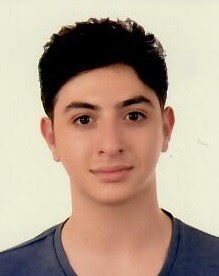
Post-Quantum Cryptography: The Path to Quantum-Safe Systems
Ghassan Barakat (SLU Madrid)
The rise of quantum computing poses a threat to classical encryption methods such as Elliptic Curve Cryptography (ECC) and RSA (Rivest-Shamir-Adleman), which are widely used encryption algorithms. A quantum computer could be exponentially faster than a classical computer in finding prime factors of large numbers. In the near future, quantum computers could run Shor's algorithm to crack classical encryption methods, posing a significant threat. Therefore, the goal of Post-Quantum Cryptography (PQC) is to develop cryptographic systems that provide defense against potential cyber-attacks from both quantum computers and classical computers. The National Institute of Standards and Technology (NIST) has been evaluating several post quantum cryptography algorithms, including Kyber, Dilithium and SPHINCS+. These algorithms utilize lattice-based and hash-based schemes, as well as key encapsulation and digital signatures. This capstone project aims to study and explore the performance benchmarking and evaluation of Post-Quantum Cryptography (PQC) algorithms on real-world datasets by analyzing matrices such as CPU, RAM, and energy usage in various PQC implementations, including stress testing on encrypted workloads.
Exhibit #40
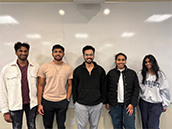
SALTify - Speech Transcription
Sagar Badgujar, Risha Bhosekar, Manali Avinash Gaikwad, Abhi Malladi, Krishna Pothuganti
Children naturally produce speech sound errors, language errors, and language features, such as disfluencies. Language errors and features are diagnostically meaningful to speech-language pathologists (SLPs) and need to be maintained in the transcription. The primary purpose of the application is to transcribe an audio sample into a written format that is accepted by SALT software. SALT software is commercially-licensed software that analyzes the speech of children and scores it according to their metrics. Our application can currently transcribe audio samples of a conversation between a child and an adult into text, perform grammar checks, and add morphemes, all without any additional manual work.
Exhibit #41
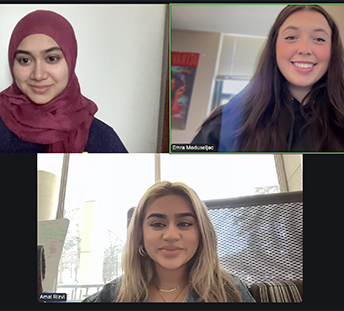
Shelter Volunteers
Taslima Aktar, Emra Meduseljac, Amal Rizvi, Sasha Trejo-Arciles
The purpose of this application is to simplify the process of scheduling work shifts for volunteers, and to give homeless shelters visibility into their upcoming staffing. The application allows volunteers to select shelters and times when they want to work, see which shelters (and which times) urgently need help, and cancel/reschedule their shifts. The application will also allow shelter staff to see who is scheduled to help at their shelter on different dates and different times, and issue a 'call for help' when help is needed urgently.
Exhibit #42

SoundSphere
Luka Gobejishvili, Maria Eduarda Mazzini (SLU Madrid)
SoundSphere is a networking platform designed specifically for the music industry. In a space that still relies heavily on word-of-mouth connections, many talented artists and professionals struggle to gain visibility and access opportunities. SoundSphere levels the playing field by offering a personalized “For You” page, allowing users to discover relevant connections, content, and collaborators. Users can build their own circle, showcase their work, and engage with others through posts, making it easier to grow their presence and career. Whether you're a musician, producer, or promoter, SoundSphere helps you connect, collaborate, and get discovered.
Exhibit #56
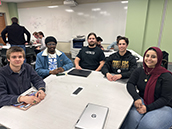
Step Time Biofeedback
Noor Issa, Jack McPhillips, Mark Mehta, Jacob Winter
Step Time Biofeedback is a project focused on developing a tool that utilizes force signal data from a Bertec split-belt treadmill to calculate step time and project target zones into a biofeedback system. This system replicates a specific walking perturbation paradigm used in motor and gait learning research. The primary goal is to facilitate studies comparing explicit (attentional) and implicit (procedural) motor learning strategies, which are critical for optimizing interventions for individuals with movement deficits and enhancing human performance. By leveraging real-time biofeedback, Step Time Biofeedback provides a data-driven approach to rehabilitation, enabling healthcare professionals and researchers to analyze patient progress, refine treatment protocols, and improve outcomes. This tailored feedback system can lead to more effective interventions, ultimately benefiting patients and advancing recovery practices.
Exhibit #43

TPEN3 Interfaces
Clendenning, Matthew; Daugherty, Camille; Fidahussain, Sarah
TPEN3 Interfaces is a project aimed at enhancing the transcription of manuscripts
by leveraging modern web technologies. Specifically, this project focuses on building
a suite of interfaces to manage and support classroom groups. These interfaces will
extend TPEN's capabilities, allowing for the creation and management of project groups
with roles like Instructor, Student, and Assistant. The interfaces will cater to the
needs of educational settings, where manuscript transcription can be an interactive
and collaborative learning experience.
Exhibit #44

Where's Religion Desktop
Amy Chen, Esbeyda Lopez, Sam Sheppard, Justin Wang, Zan Xiang Wang
Where’s Religion? is an open-source application developed by humanities faculty and IT professionals at Saint Louis University that supports in-person research, remote data entry, media sharing, and mapping. The website is designed to facilitate a more robust public understanding of religion through rigorous scholarly methods. Our conviction is that the study of religion must account for the wide range of embodied experiences, improvised practices, material cultures, and shared spaces that humans inhabit. Through a research methodology that moves beyond analysis of sacred texts, creeds, and official teachings, Where’s Religion? provides a platform to diversify the data we study and to advance the study of religion we all encounter in everyday life.
Exhibit #45
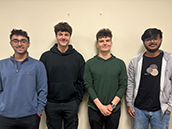
Where's Religion Mobile
Adem Durakovic, Amar Hadzic, Yash Kamal Bhatia, Karthik Mangineni, Nikhil Muthukumar
Where's religion is an app created for the class room and aimed at ethnographers. Users are able to upload notes which include text and media which can later be studied. Users are also able to view other users published notes. The app includes a map feature where a user can scroll throughout the world viewing published notes. Often a note is about religion or just human culture in general. The app also provides features like dark mode. The app is also on the App Store!
Exhibit #46

How are microplastics distributed in urban stream channels and floodplains?
FIRE BALEEN: Julia Theisen
Microplastics are fragments of plastic <5 mm in size that have become an area of growing concern due to their human and ecological health risks. These contaminants have been found in nearly every type of environment on Earth, ranging from arctic sea ice to stream systems. Although microplastic research has begun to shift from marine environments to evaluation of their movement and storage within terrestrial ecosystems, we still do not know how they get to, transmit through, and are stored in fluvial habitats. Urban streams may be particularly vulnerable to microplastic pollution given their proximity to anthropogenic sources. Their channels, banks, and floodplains may also represent important storage sites for microplastic debris that could be reintroduced to the stream water during flood events. We therefore assessed how microplastics are stored in the sediment of an urban stream.
Exhibit #63

Analysis of GNSS Receiver Differences
Jace Smuszkiewicz, Jian Yao
Saint Louis University recently installed a new set of GNSS receivers on top of O'Neil Hall. These receivers are attached to the same antenna and are positioned less than 1 meter from another. The only difference in the data they receive is that they use two different cables. How much of a difference is in their data from this one simple change?
Exhibit #54

Studying change in the Koshi River, 1984-2024
Jace Smuszkiewicz, Bo Wang
The Koshi River is a intermittent river that dries up for half the year and floods for the other half. Every time the dry season ends and water returns to the area, the river changes its course dramatically. How has the river changed in the past 40 years, visible with Landsat data, and how will it change in the future?
Exhibit #55
Mapping Socio-Economic Status to Water Contamination Patterns in St. Louis County
Freshwater Systems & Sustainability Lab: Tate Severs, Jacob Verscueren, Pascal Sikorski
Freshwater contaminants pose significant environmental and public health risks in urbanized areas, with levels of contaminants often unevenly distributed across socioeconomic gradients. For this study, we investigated the associations between contaminants in freshwater systems and socioeconomic variables within St. Louis City and St. Louis County. Our goal is to supply the region with a comprehensive mapping of freshwater contaminants relative to local community characteristics. We sampled 30 sites across the region and measured the concentrations of uranium radionuclides as well as heavy, transition, and alkali metals. Using geospatial analysis, census data, and contaminant concentrations, we analyzed the relationships between contaminant concentrations and median household income, demographics, healthcare accessibility, and zoning. Results suggest correlations between contaminants and socioeconomic characteristics, providing a foundation for policymakers and community stakeholders to develop informed strategies aimed at reducing environmental health disparities in the St. Louis region.
Keywords: Freshwater contamination, environmental justice, uranium, heavy metals, socioeconomic disparities, geospatial analysis, public health, St. Louis.
Exhibit #62

Trash_ML: An End-to-End Deep Learning Framework for Effective and Automated Waste Management.
AI-CHESS Lab: Tate Severs, Orhun Aydin, Vidya Sravanthi Garikapati, Vivek Kanwar
The Trash_ML project aims to revolutionize solid waste management in St. Louis City through leveraging a custom built convolutional neural network (CNN) capable of autonomously identifying recyclable materials. Trained on optical and multispectral data collected from cameras positioned in recycling dumpsters, this model accurately captures the diverse waste practices across various socioeconomic regions. By manually labeling 100% of our training dataset, currently comprised of 18,200 images and 115821 unique labels, our approach acutely classifies paper, plastic, metal, and glass waste, notably breaking down each class into secondary and tertiary subcategories—a classification technique not yet seen in CNN-based research. Furthermore, real-world imaging within dumpsters under challenging conditions, such as low light and high occlusion, diversifies our data set and builds upon our model’s robust performance. Ultimately, this initiative seeks to reduce the workload for local recycling centers and mitigate the environmental repercussions of mismanaged solid waste, paving the way for effective machine learning applications in waste management.
Exhibit #53

Comparative Study of Optimal Growth Pressure for High Quality Single/Double Layer Graphene on Copper and CoCrMo via Chemical Vapor Deposition
Abigail Roe, Zijun Wang
Graphene, a single to few layer carbon film, is known for its excellent electrical conductivity as well as biocompatibility, making it advantageous for medical applications. Graphene grown on metal substrates which could have medical uses needs to be high-quality, meaning there are little to no defects within each sample. Here, we investigate the role of pressure conditions on few-layer graphene growth as a method to optimize the growth conditions of graphene via chemical vapor deposition (CVD) due to the technique’s scalability. We employed ambient pressure CVD and low pressure CVD on copper (Cu) and cobalt-chromium-molybdenum (CoCrMo) substrates in order to compare the level of defects found in each sample. Analysis via Raman Spectroscopy and Atomic Force Microscopy showed that low pressure CVD is favorable for the growth of monolayer graphene on Cu while ambient pressure CVD is preferable for growth of quality bilayer graphene on CoCrMo, a medically relevant alloy.
Exhibit #61

Med Reveal
Claire Elah Doua, Tarun Janapaty, Seyun Jeong, Sai Kiran, Harshu Pande
Med Reveal is an AI-powered analytics platform that helps provider groups, employers, and insurers navigate healthcare pricing. Our platform delivers actionable insights on reimbursement rates, cost benchmarks, and price transparency, enabling better contract negotiations, cost containment, and strategic decision-making.
Exhibit #57
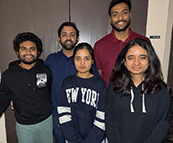
Nutrinex AI
Achyuth Kumar Thalloju - Saint Louis University - Major in Analytics
Shiva Sai Sankoju - Saint Louis University - Major in Information systems
Boni Preetam - Saint Louis University - Major in Analytics Information Systems
Nandita Singh - Saint Louis University - Major in Analytics
Vaishnavi Mailwar - Saint Louis University - Major in Analytics
Nutrinex AI is an AI-powered mobile app designed to transform eating habits by delivering hyper-personalized nutrition guidance. Using advanced machine learning, the app analyzes users’ unique profiles—including body metrics, dietary preferences, health goals, and medical conditions to generate dynamic daily meal plans. The AI adapts recommendations based on progress, feedback, and evolving goals, offering actionable insights to address imbalances and promote sustainable habits. By combining verified food databases with adaptive algorithms, Nutrinex AI acts as a 24/7 nutrition coach, helping users make informed choices. Prevent chronic health risks and achieve long-term wellness. Ideal for busy individuals, fitness enthusiasts, or those managing dietary restrictions, the app bridges the gap between generic advice and truly personalized nutrition.
Exhibit #58

Psynapse AI: Bridging the Health Engagement Gap with AI-Driven Support
Michael Kozlowski, Aakash Manohar, Aniketh Naidu
Psynapse AI is an innovative mental health platform designed to enhance patient engagement and provide healthcare providers with actionable insights between meetings. Utilizing advanced large language model (LLM) technology, our app engages users in meaningful conversations. The app includes gamification elements to encourage daily user engagement. Incorporating objective health metrics and session summaries, the platform offers a comprehensive view of a user's mental health journey. With a focus on user convenience and data security, Psynapse AI aims to transform mental health monitoring and support, making care more accessible and effective.
Exhibit #59

Unlock Your Cognitive Potential with AI-Powered Neuropsychology
ThinkXX: Bucio Fernanda, Manríquez Ignacia, Navjith Aditi
Unlock Your Cognitive Potential with AI-Powered Neuropsychology
At ThinkXX, we redefine cognitive assessment through gamified neuropsychological tests that provide a holistic, science-backed view of brain performance. Our AI-driven platform analyzes cognitive strengths, identifies areas for improvement, and delivers personalized, actionable strategies to enhance focus, memory, and mental clarity anytime, anywhere.
How It Works:
Engaging Games, Powerful Insights – Play neuroscience-backed cognitive challenges
designed to assess memory, attention, processing speed, and executive function.
Personalized AI Analysis – Your results are interpreted through advanced AI, incorporating your environment, lifestyle, and biological rhythms for deeper insights.
Data-Driven Recommendations – Receive customized, evidence-based strategies to optimize mental clarity, reduce brain fog, and enhance daily performance.
Exhibit #60

Advancing RNA Motif Structural Analysis with a Fully Automated AI Agent
AutoRNA: Jie Hou, Rahul Jasthi, Burhan Khaz, Ramez Mosad, Vivek Shenoy, Brent Znosko
RNA motifs are essential for gene expression, protein synthesis, and molecular interactions, yet their analysis remains complex and computationally demanding. At Saint Louis University, manual RNA motif analysis workflows are slow and error-prone, making it difficult for students, particularly in chemistry, to participate in research. This project introduces an automated framework that leverages large language models (LLMs) to improve RNA motif detection, clustering, and structure prediction. The system features a modular, user-friendly interface that allows students with minimal programming experience to conduct meaningful research for RNA structures. By integrating LLMs for workflow automation, this approach improves research efficiency and expands access to computational RNA analysis. In addition to RNA research, the framework can be adapted for broader AI-driven applications in STEM, providing a scalable tool for interdisciplinary research and education.
Exhibit #48
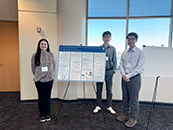
An AI-Enhanced Car-Following Model for Electric Vehicles: From Real-World Data to Macroscopic Traffic Analysis
Kate Embry, Ayana Asanova
Internal combustion engine (ICE) vehicles and electric vehicles (EVs) exhibit distinct vehicle dynamics. EVs provide rapid acceleration due to electric motors producing peak power across a wider speed range. They also achieve swift deceleration through regenerative braking. While existing microscopic models capture the driving behavior of ICE vehicles, there is a lack of modeling frameworks to describe the car-following dynamics of EVs. Developing a comprehensive model for EV driving behavior is essential, especially given their increasing presence in traffic. However, creating an easy-to-use analytical car-following model specifically for EVs is challenging. In this study, we develop an AI-based car-following model for EVs using real-world trajectory data from vehicles equipped with adaptive cruise control (ACC). We then conduct comprehensive simulations to examine the macroscopic impacts of EVs, as described by the AI-based model, on traffic flow, comparing these effects to those of ICE vehicles across various EV penetration rates. The numerical results provide valuable insights into how emerging vehicle electrification and automation may influence future traffic flow.
Exhibit #49
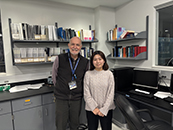
CFD Study of a blue whale gliding to a patch of prey at depth
Jenny Seon
Large baleen whales such as the blue whale (Balaenoptera musculus) are filter feeders that prey on very small animals like the centimeter-sized krill (order Euphausiacea), and in quantities that enable them to reach some of the largest body sizes ever attained on Earth (up to 30 m). Such feeding is carried out with great efficiency with the whales lunging into large swarms of prey with their mouths open, thereby filling their ventral pouch with both swarm and water, before closing the mouth. This process then completes by tightening the buccal cavity musculature to push the water out of the cavity and through the baleen plates that serve as a filtration surface that retains the krill. Since krill is found in greatest numbers (and swarm density) at daytime and at depths ranging from 10m to 500m, the whales begin their chase by gliding towards the swarm from the surface. Such gliding involves the cambering of their fluke and tucking-in their flippers to trim the body for best glide ratio. Previous Computational Fluid Dynamics (CFD) simulations of gliding by whales involved the use of extended flippers and flukes functioning as wings to generate the required glide ratios. In contrast, this study aims at investigating the role of the body itself in generating lift, while trimmed with un-extended flippers and cambered flukes into an anhedral. Our study is based on the use of the commercial CFD software SC/Tetra-14 to model the flows about realistic whale models based on digital photogrammetry, which consists of integrating multiple 2D images into a single 3D model.
Exhibit #66

Cryofuse
Regan Gibson, Clara Kokenge
Cell mechanics and mechanobiology are the study of how external forces influence the life cycle and/or biochemistry of a tissue or culture of cells. In the Bledsoe lab, we are interested in the study of bone cells to better understand how we might create tissue engineered bone for bone graft applications. One of the immediate challenges for this kind of study is getting the cells into the scaffold environment, in this case gelatin chitosan cryogels. This project would seek to define the process for seeding MC3T3-E1 cells into the cryogels, including how to make the cryogels such that the cells can infiltrate, attach, and grow.
Exhibit #51
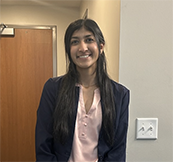
Dye-Incorporated Polymers with Functionalities for Both Lubricity and Adhesion and their Coating of PEG-Based Hydrogel Microspheres for Application in the Treatment of Knee Osteoarthritis
Maitreyi Bhagat
Osteoarthritis, a degenerative joint disease, is a debilitating orthopedic condition characterized by chronic pain and loss of function in the joints. A key feature of osteoarthritis is compromised lubrication and mechanical properties driven by chemical changes in the synovial fluid. Here, we have developed super-lubricious hydrogel microspheres to restore mechanical properties and offer the potential for drug delivery into the synovial joint. Hydrogel microspheres were fabricated using polyethylene glycol (PEG), which was crosslinked via Michael-type addition, forming tunable, biocompatible, and biodegradable microspheres. To enhance the lubricity of the microspheres, a super-lubricious, custom-synthesized copolymer was dip-coated onto the microspheres. The copolymer consisted of muscle glue-like dopamine methacrylamide (DMA) and super-lubricious sulfobetaine methacrylate (SBMA) and was demonstrated to effectively adhere to the surface of microspheres. The resultant coated microspheres were analyzed through confocal microscopy and rheology to examine and test the mechanical properties of the spheres.
Exhibit #52

Early-Stage Assessment of Weather Data for Enhancing Freeway System Resilience in St. Louis
Abigail Pahls
Infrastructure resilience is crucial for ensuring that systems such as roadways and transportation networks can withstand, adapt to, and recover swiftly from disruptions. As global warming progresses, extreme weather events become more frequent and intense, disrupting transportation and challenging system resilience. This research project explores and evaluates various weather data sources for developing weather-aware transportation systems. The project aims to utilize National Weather Service radar data, airport weather station data, RWIS data, and a network of traffic sensors to identify the optimal approach for the weather-aware operation of transportation systems. This project focuses on a case study of the St. Louis metropolitan area freeway system.
Exhibit #50
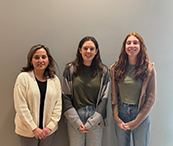
Energy Analysis of McDonnell Douglas Hall
Elizabeth Dolan, Dana Marmolejo, Jessica Rutherford
This work focuses on determining energy losses stemming from building materials, construction constraints, and the HVAC. The analysis of McDonnell Douglas Hall consists of two primary components: data collection and impact assessment. During data collection, comfort variables such as indoor temperature, humidity, and air quality are recorded. Thermodynamic data from the operating conditions of the chiller and air handling unit (AHU) are also recorded. These data points serve as the foundation to identify areas where the thermal envelope of the building and HVAC operations fall economically short. Impact assessment builds on the data that was collected by evaluating the effectiveness of the AHU and identifying energy leaks.
Exhibit #67

Exergy and Energy in St. Louis
Jose Montoya, Clayton Stout
This study analyzes the energy systems of Saint Louis City and the Metro Area using exergy analysis to identify inefficiencies and opportunities for improvement. Rapid global urbanization mandates a meticulous examination of energy efficiency and availability in urban areas. Exergy analysis allows us to evaluate both the quantity and quality of energy, providing a unique perspective beyond traditional energy efficiency metrics. To ultimately determine the irreversibilities in the St. Louis Power supply chain, it was necessary first to analyze the power consumption of St. Louis City. St. Louis City consumes an average of 530 MW of power. Since Ameren Missouri covers St. Louis city, data was mapped in order to realize the scope of the local power production. The fuels used by these plants, along with the regions from which they are sourced, were also considered to ensure an accurate analysis of their chemical properties.
Exhibit #69

Investigating Baleen-Inspired Filters for Microplastics Removal
FIRE-BALEEN Hydrodynamics: Jeddrick Gamilla, Ben Groth, David Hammond
Along with their intentional food, mysticete (baleen) whales are excellent at filtering microplastics out of seawater. This project seeks to simulate and test baleen-inspired filters for removal of 2mm-scale particles at low pressures. To do so, we ran computer simulations of these filters and tested physical models in a flow tank. We found that the loose bristles present on the upstream face of baleen plates enhance the efficiency of an extant filter, encourage an even spread of particles over said filter, and make filter cleaning much easier.
Exhibit #65
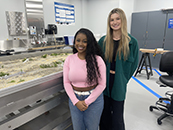
Microplastic Orientation in Flow and Capture by Drone
FIRE-BALEEN Applications: Belinda Minner, Ava Alton
Microplastics' increasing presence in the environment and water systems compromises ecological and health standards. The FIRE-BALEENmp Project aims to create a filtration system inspired by the baleen filter of large whales. The BALEENmp research project could potentially decrease the amount of microplastic in the environment via the design of efficient filters. It could also lead to integration of such design in underwater drones.
Exhibit #64

Neural Network Modeling for Predicting Local Heat Transfer in Jet Impingement
Dylan Olson
Numerous authors have reported piecewise correlations in the literature to capture local heat transfer characteristics in jet impingement for various jet-to-target plate spacings and Reynolds numbers. However, developing a unified, comprehensive correlation using traditional data-fitting techniques poses significant challenges due to the complex and nonlinear nature of the phenomenon. To address this, a neural network model is trained using experimental datasets to create a unified predictor for local heat transfer performance. A hyperparameter tuning study is conducted to determine the optimal neural network architecture. The input variables include the Reynolds number, jet-to-target plate spacing, and radial distance from the jet’s geometric center, while the output variable is the local Nusselt number. To evaluate the model’s performance, key metrics such as the regression coefficient, mean absolute error, and root mean square error are computed. The neural network outperformed traditional correlations in predicting local heat transfer characteristics. This approach holds promise for advancing heat transfer research and providing engineers with more reliable tools for designing efficient thermal systems.
Exhibit #93

WheelArm
Mecharithm Lab: Aedan Bird, Kody Cool, Pascal Sikorski
Globally, more than 90% of wheelchair users report limitations in performing everyday activities, a statistic we hope to decrease with work from the Mecharithm Lab. WheelArm is a project by Aedan Bird, Kody Cool, Pascal Sikorski, and others from the Mecharithm Lab that aims to improve the quality of life for these users. For our workspace, we designed and built a robotic system using a research model of the WHILL Model C2: Portable Electric Wheelchair, for which we developed a custom mount to integrate a Kinova Gen3 Arm. By utilizing both models in completing mapping, navigation, and manipulation tasks, we find early results that this work can enhance the lives of those reliant on assistive technology. Our work contributes not only to assistive robotics but also to multi-robot collaboration, as we are discovering ways to improve the functionality of both models by enhancing communication and functionality through increasing multi-model compatibility.
Exhibit #94